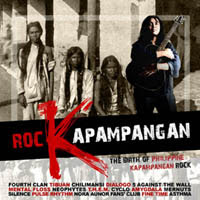By Michael Tan
Pinoy Kasi
Philippine Daily Inquirer
MANILA, Philippines -- I learned, only two weeks ago, that there's an International Mother Language Day (IMLD), celebrated on Feb. 21. Initiated by UNESCO in 2000, IMLD commemorates an event back in 1952.
At that time people were still reeling from the partition of India and Pakistan. The main language in Pakistan was Urdu but there were also many people, in what was then East Pakistan and now Bangladesh, who spoke Bangla. There was a demonstration on Feb. 21, 1952, in support of the right to speak and use Bangla. The police fired on the crowd and three people were killed, martyrs for a mother language.
A mother language is different from a national language. In the Philippines, we have a national language called Filipino, which is supposed to draw from different languages in the country but which is still largely Tagalog-based. Tagalog is the mother language of many Filipinos, mainly those living in Central and Southern Luzon.
But for many other Filipinos, the mother language is Cebuano (probably outnumbering Tagalogs), Ilokano, Ilonggo and more than a hundred others. Even the Tsinoy (Chinese-Filipino) can say that Filipino is our national language, but Minnan (or Hokkien) is their mother tongue.
The idea of a mother language is purely cultural, a way of marking our identity. A mother language can be powerful, which is why governments sometimes try to suppress, even eradicate, the use of minority languages. Often, this is done because of the mistaken notion that national identity depends on having only one language throughout the country.
Today, we know that multilingualism can contribute to nation-building. When people are allowed to nurture their mother language, at home and in schools, they learn to appreciate not just their own local culture but also that of the nation.
Compare a national TV or radio broadcast, in English or Tagalog-based Filipino, with a regional or provincial station where the discussions are in the local language and you'll find the latter is much more animated, the analysis more in-depth. There's much more interaction, with more nuances captured, and national issues become more real to the local population.
During the last two weeks, the Inquirer has published several articles on another aspect of the use of mother language, this time for education.
There was the two-part article by Diane and Greg Dekker of the Summer Institute of Linguistics, and another article by UP linguistics professor Ricardo Nolasco, all pushing for the use of the local language (sometimes called L1, or first language) in schools, citing research to support the contention that classroom instruction in an L1 makes it easier to learn other languages (in the Philippine context, Filipino and English) as well as science and mathematics.
Maranaw
All this is not new. Even in the past, without conducting elaborate experimental research, educators noted how the use of a local or mother language could facilitate learning. Let me share an account from "The Lanao System of Teaching Illiterates, " written by Frank Laubach and which appeared in "Tales of the American Teachers in the Philippines, " edited by Geronima Pecson and Maria Racelis.
The Americans were recruiting teachers to handle public schools in Lanao but found only a small percentage of the population was literate. Those who could read and write were using Arabic and the Americans realized that the local language, Maranaw, was only spoken, without any written system. So they devised a writing system for Maranaw and began to transcribe local songs, prose and poetry. There was certainly no lack of local oral traditions waiting to be transformed into print.
Laubach noted that there were "at least 35 long epic poems that would range from 20 to a hundred printed pages in length," "many prose stories resembling those of the Arabian nights," "kisas," or stories from ancient prophets, and thousands of lyric poems "about the harvest, the rain, the clouds, the sunset, love, despair ... everything in their lives."
Using these printed texts of Maranaw folk literature facilitated the literacy campaign, because people were intrigued by the idea of being able to read their own literature. In the first four months of 1931, when the Americans first launched their program, they were able to teach 3,000 new individuals each month to read and write. Eventually, the Americans gained as well, by translating English materials on "health, government, history, geography, business, morals and religion" as well as Philippine laws into Maranaw.
We don't seem to have learned from that experience in Lanao. English remains the preferred medium of instruction, using English textbooks, and we like to imagine a time when, supposedly, Filipinos spoke proper English. We forget fluent English was a function of class, of people who could use English both in schools and at home, and with their social circles. For the majority of Filipinos, English and, later, Filipino was, and still is, distant.
If Laubach returned to Lanao today, he'd be shocked to find that literacy levels have plummeted again, even as the schools struggle with new requirements to promote English. Everywhere in the country, our textbooks, vital public documents and, generally, books on science are often produced only in English. Many Filipinos are deprived of access to important information needed to participate in civil life.
Reading Laubach's account about the Maranaw also reminded me that our preference for English and now, a skewing toward Tagalog-based Filipino, has contributed to the stunting of regional languages and cultures. Some years back, in one of my graduate classes, a student noted how thrilled he was when he first saw Kapampangan printed literature. Suddenly, the folk tales, the riddles, proverbs that he heard as a child became more real, and more certain of being preserved for future generations.
He is lucky that there is printed Kapampangan literature. For many of our other languages, we only have oral traditions, many of which are in danger of dying out because no one is passing them on.
At the University of the Philippines, the Department of Filipino sees the importance of exposing students to all these languages, and their literature, offering courses that deal with literature from all over the country. Similarly, the Department of Linguistics is beginning to offer classes in Cebuano.
We need a national language, no doubt, but the current policy is worrisome because it promotes English first, Filipino second -- both at the expense of other mother languages. We should allow Filipinos to nurture their own mother language and share this with other Filipinos or even the world.
As we begin to appreciate the rhythms and cadences, the humor and the wisdom, in each of our many languages, we just might be able to overcome our parochialism and regionalism and build a nation strong in its multicultural foundations.
Alben meng manyaman, boy!
February 24, 2008
Subscribe to:
Post Comments (Atom)








No comments:
Post a Comment